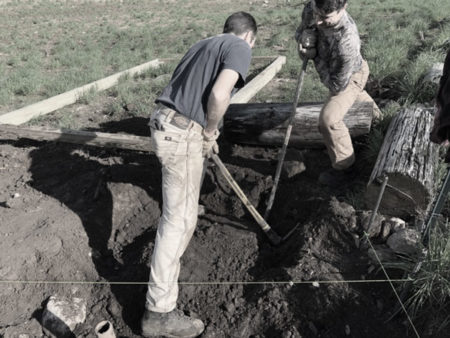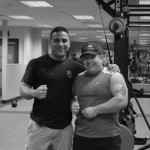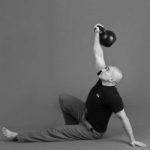Life happens. It can be unpredictable and hard, and extremely satisfying. For many of us, training is a big part of our lives. But training does not equal reality. And while we can’t always train for life’s fights, we can train skills that will help us rise up to the challenges it brings.
Very few people live an easy life walking “between the raindrops.” Even the happiest existence is riddled with unexpected challenges from unpredictable angles. To state the obvious, these challenges are good and bad. Clearly, life would be more enjoyable without them, but overcoming them allows us to reach our full potential. But unlike the movies, it’s pretty rare to do something in real life that we haven’t practiced, a lot. Someone very wise once said, “Under pressure, we will not rise to the occasion, we will sink to the level of our training.” If we want to overcome challenges, we need to practice.
Luckily there are countless ways to do so. Some people climb up or ski down mountains, while others become students of martial arts or strength to name but a few. The physical and mental challenge combined with a real risk of failure is essential. Plus, if you yourself have already been through the wringer once or twice, you know when the physical going gets tough it’s your mental toughness that gets you through. Hence the reason these undertakings are helpful not just for the simple enjoyment of a pastime but also for the positive ripple effect on the rest of your life.
For better or worse, no amount of practice will ever completely remove life’s hurdles, but it can at least get you more hang time!
Life’s Practice
Speaking of hurdles, my brother owns a small homestead outside of Providence, RI. It’s a charming spot. Five acres of various nut trees, berry bushes, fruit trees, chickens, and (soon) pigs and a steer. (Oh, there’s also a lot of poison ivy and stinging nettle, but let’s stay on the bright side.) When I can, I head there to help him with jobs that are just too much for one, albeit very talented, man. This most recent trip was to help him build a shelter for the soon to arrive pigs and steer. The shelter was one of a number of items on what seemed, at first glance, to be a reasonable list that also included splitting and stacking wood for the upcoming winter and putting a protective mesh over the blueberry bushes. But sometimes things take longer than expected. What should have been about a day and a half build turned into three days of digging out rocks and one day of construction.
If you’ve never been to the northeast, just know that the rocks up there can be quite something. What looks to be a picturesque pasture is really a granite quarry, barely covered by a few inches of dirt and grass with car-sized rocks waiting for the first strike of your shovel. Ok, maybe not “car size” but definitely the size of those little cars the Shriners drive. And a LOT heavier! With so many rocks in the ground, it’s amazing anything actually grows!

Many of these rocks were upwards of 500 pounds with nary a good grip to be found for removal. As much as I love kettlebells and barbells, nature doesn’t often afford us a handle placed at a perfect height to grab. Shocking insight alert: the gym is not reality. But this doesn’t mean don’t train in the gym. In fact, I would argue it means train MORE at the gym so when you do encounter this kind of obstacle it is more doable.


yet.
As a guy who hasn’t done much yard work over the last 20 years, I can tell you I was very happy to have the reservoir of strength I’ve developed over the years of kettlebell and barbell training to dip into for this week of real-life work with my brother.
Like most martial artists who take their strength training seriously, I often see parallels between the two disciplines. Please allow me to build up to one here.
I am overly simplifying the classification of various martial arts into “sport” or “self-defense.” Both are right for the job, depending on the job. Sport martial arts like Brazilian jiu-jitsu and muay thai focus a lot on practical application (sparring) and allow you to push yourself to limits you could not otherwise do without the safe training methods upon which sport martial arts are built. Self-defense martial arts focus on discipline and “quick kill” types of techniques as well as flowery movements like katas that are the “art” part. These self-defense practices do spar, but they are not built as much around the practical application as sport-based martial arts. The reasons become obvious when you consider that an arm bar in BJJ and a boxing glove in muay thai can be controlled to avoid damaging your training partner.

But poking someone in the eye or kicking them in the groin are not techniques that can be safely practiced regularly. And since we will always sink to the level of our training, regular practice is a must.
Reality vs Training
This is a long-winded way of saying that reality and training don’t always meet. For example, what if I get in a fight with a guy
Maybe you, but not me. If I were to get in a fight on the street that I couldn’t avoid (which is admittedly rare), you can bet I will try to stay on my feet and end it as quickly as possible—very likely with a poke to the eye. But this doesn’t mean you shouldn’t train BJJ or muay thai. Again, quite the opposite. It would be better for you to go through life with as few street fights as possible. They are dangerous and legally burdensome. Plus, with great sport martial arts studios on every street corner, you can feed that urge in a healthy environment with little to no risk of injury.

Clearly, the same principle relates to strength training in the gym and then applying that strength on the farm. As I said before, rocks in the dirt are not placed in perfect spots with handles at perfect heights from the ground. In fact, they often can’t even be moved without the additional help of hand or power tools. But this doesn’t mean you don’t lift in the gym because your “fight” is on the farm. Nor does it mean that a strength practice will not deliver huge value in other, less rock-shaped ways—it will. It means you train MORE in the gym so when you encounter these “fights” in the field you are more prepared for the challenge.
“Under pressure, we will not rise to the occasion, we will sink to the level of our training.”
Considering how few actual fights most people will get into throughout the course of their lives, one of the biggest benefits of martial arts training is the ripple effect of improved mental fortitude developed by overcoming fears and hurdles in class spilling over into life off the mat. The same principle applies to strength training. Going through a tough deadlift or press program builds not just your physical strength, but also your mental strength. Also similar to martial arts, you need to decide on a destination. As I said earlier, sport or self-defense martial arts are both right for the job, depending on the job. Being “strong” is similarly subjective. Are you going to compete in powerlifting? Are you a BJJ competitor who wants to be stronger than everyone else in the division? Do you want more bone density so you can grow older more gracefully? Only you can answer the question of what strong enough means to you. Take an honest look at your goals and needs, and decide. So, when the going gets tough, you are more prepared.
Stay strong, my friends.






John, what a great article – lifting, combat arts, life. Thank you sir!
Thanks Pavel! Looking forward to StrongFirst Resilient with you in Los Angeles soon!
In my case it has been 31 years in judo but with several years (maybe 15 in total) seriously following other arts like karate, kickboxing, fencing, kendo, some BJJ too.
Sport and weight training is a practical necessity. They make you so that you can stay alert and work harder longer, and stay healthier and alive longer. This is just a simple but brutal fact. I don’t lift heavy weights in case I have to work on a farm one day and I don’t do judo in order to beat people up. I do both do live long, look attractive to my wife, presentable to others, have the endurance to work hard and long at my career, family duties and hobbies, all in all simply to live long and well. If it could all be done without exercise, I suppose I likely would do without it (although at this point I quite enjoy the movements and the feel or working out). Having said that, nice bonuses of weight training and judo are that I can indeed do some garden work or house chores with less strain, and I have been able to handle myself in some pretty “iffy” situations with angry, deranged people, so I still do want my training to relate in some reasonable way to real life emergencies. This is why I prefer judo to BJJ – we learn to fight well on the ground too, but we specialize a bit more on our feet, as it’s not wise to fall on the ground in a real fight for lots of obvious reasons that aren’t worth going over here. But I think karate is better for real combat than judo, but the problem is that I’m not prepared to hit a board thousands of times a day to forge my hands into weapons, and the other training in karate is not such that makes you strong and healthy. It’s for really “killing with one blow” and I’m just not living in such danger that real karate training would be of benefit to me. At the kind of level of violence it trains you for, we’re talking about real weapons coming out. Judo is about escaping from someone trying to control you, basically, and if you’re free from their control, you’ve solved most of the problem, and there is quite a lot of fascinating strength, endurance and gymnastics training involved in judo. Again, with the fencing arts, they are fascinating and their history and traditions are thrilling, but they lack strength development and practical utility. I’m not in a situation where stabbing people is something I need to be trained to do. Heck, judo in a lot of ways is “just” partner callisthenics!
I think if you do some kind of resistance and cardio training to a decent level, you’re doing the best thing you can for yourself! This can be kettlebells, barbells, steel mace, callisthenics, acrobatics, wrestling etc, whatever tickles your fancy! They are all one, really!
great!